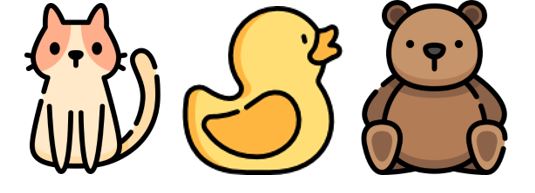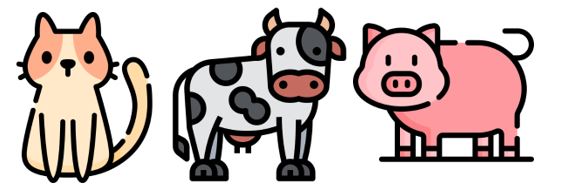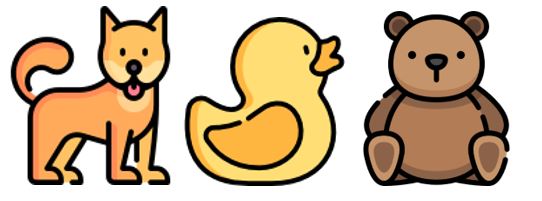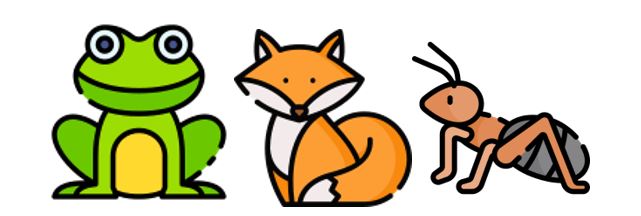Dimension of Phonemic Awareness
Phonemic awareness is a critical ability in early literacy and language development. It entails being able to identify and modify specific sounds, or phonemes, inside spoken sentences. One important aspect of phonemic awareness is the ability to spot oddities in phonemic patterns. In other words, it is about detecting and isolating the distinct sound in a collection of words or images. This game assists children in honing this particular facet of phonemic awareness, improving their capacity to hear and distinguish unique sounds in words.
Game Instructions
- Set the game folder in a level area so that the child can readily access it.
- Explain to the child that they will be taking part in an exciting game that involves identifying the odd one out among a group of pictures. Explain the need to depend on sounds to identify the picture that sticks out due to its first sound.
- Open the folder and take out a set of three images depicting various animals.
- Encourage the child to name each animal, paying close attention to the first sounds of each word.
- Once the child has selected the animal that has a distinctive sound from the others, they can place it in the specified “Odd One Out” box.
Child-Friendly Instructions on the Game
The game will be made suitable for children by using visual signals and basic visuals on the folder. The “Odd One Out” box should be labeled with a large question mark to evoke mystery and interest. It will also have a picture of a child actively listening, accompanied by thinking bubbles.

Examples on the Game
To illustrate how the game works, sets of pictures that exemplify the concept of oddity will be shown, such as:
Level 1
- Bee, Bat, Lion (Odd One Out: Lion, as it has a different initial sound)

Level 2
- Turtle, Tiger, Lizard (Odd One Out: Lizard)

These initial demonstrations serve to introduce the child to the game and its core principles.
Modification into Phonics Skill Activity
To adapt the game into a phonics skill activity, the child can be offered a shuffled set of pictures where they must identify the picture that begins with a specific sound, such as the /b/ sound. This modification shifts the focus from general phonemic awareness to more specific phonics instruction. As an example, the child would need to choose the card with the Bear from the set below:
- Cat, Duck, Bear

ELL Modifications
To work with English Language Learners (ELL) or pupils from varied cultural backgrounds, the images utilized will be culturally neutral and recognizable to children from many cultures. The simple instructions will employ visual clues to aid comprehension and provide an accessible learning environment.
Self-Checking
A color-coding system will be implemented for the convenience of self-checking. Each card will have a colored background with the color corresponding to the first letter of the animal’s name. This allows the child to self-check their choices by simply turning the card over and seeing if the card they chose has a different color from the others.
Differentiation for Skill Levels
Level 1 (Just Beginning)
Use sets of pictures where each animal’s name has 1-2 syllables.
Level 2 (Need More Challenge)
Use sets of pictures where the animal’s names contain multiple syllables.
Game Items for Each Skill Level
Level 1
- Bee, Bat, Lion

- Cat, Cow, Pig

- Dog, Duck, Bear

- Fox, Frog, Ant

Level 2
- Turtle, Tiger, Lizard

- Dolphin, Dragon, Horse

- Kangaroo, Koala, Jellyfish

- Rabbit, Raccoon, Octopus

All images were provided by Freepik.